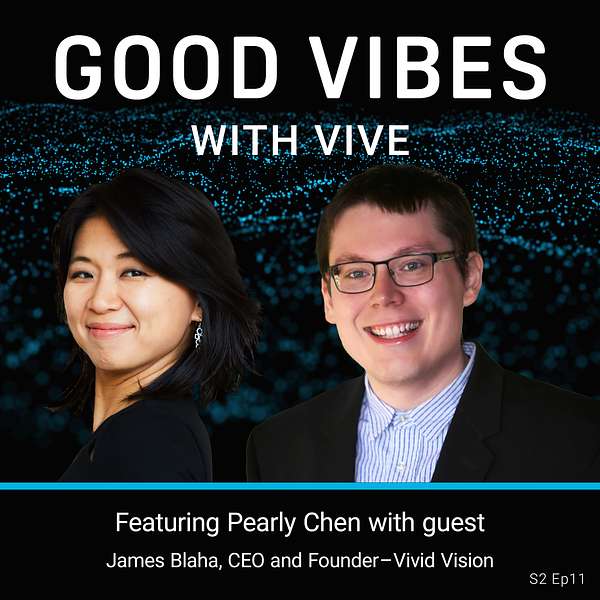
Good Vibes with VIVE
Good Vibes with VIVE
Could VR Reverse Vision Problems?
Season 2 Episode 16: Show Notes
Pioneering medical technology firm, Vivid Vision, aims to do exactly that! Founder and CEO, James Blaha grew up suffering from amblyopia and strabismus and, as an adult, he decided to try and improve his own vision with technology. While building the first prototype of Vivid Vision, he gained stereoscopic vision and went on to start the company, which uses VR software to treat vision conditions such as binocular vision disorders, amblyopia, strabismus, and other conditions that you’ll learn more about in today’s episode. Listen in as James shares some insight into his early experiments with VR and 3D projection mapping, how the software has evolved, and what is next for Vivid Vision, including a direct-to-patient eye wellness app. We also come to understand his entrepreneurial journey, the value of startup accelerator programs, and the process of expanding into global markets, plus so much more! For an in-depth look at how Vivid Vision is changing the world of optometry using VR technology, make sure to tune in today!
Key Points From This Episode:
- The story of how James set out with a desire to understand his own conditions.
- Insight into some of his early experiments with VR and 3D projection mapping.
- How Vivid Vision encourages the integration of information between both eyes using VR.
- The Indiegogo campaign that made James realize he had inadvertently started a business.
- The early days of Vivid Vision, from prototype to fundraising and commercialization.
- Why James believes that startup accelerator programs are worthwhile for founders.
- James outlines the process of creating a clinician-prescribed game-based treatment plan.
- How the proliferation of standalone VR headsets made at-home treatment possible.
- Characterizing the differences in regulatory frameworks between the US, Europe, and Asia.
- What drove James’ decision to go international so early on and what kept him motivated.
- Find out what is next for Vivid Vision, including a direct-to-patient eye wellness app.
- The importance of treating your visions the way you treat other aspects of your health.
- Opportunities to build these kinds of vision treatments into other gameplay experiences.
- James shares his big-picture goals for Vivid Vision, including earlier detection of eye issues.
Tweetables:
“[Vivid Vision requires] the integration of information between [both] eyes. An eyepatch just covers up the good eye and forces you to see everything through the weak eye, which works with kids about 60 percent of the time and, with adults, a lot less than that.” — @jamesblaha [0:10:51]
“VR was out for years before almost any medical system made any rules regarding it, so the biggest challenge is uncertainty and what the regulatory framework is going to be.” — @jamesblaha [0:25:02]
“There are all these really specific use cases. More people want better vision and it doesn't involve an eye problem or eye disease at all. VR is a powerful tool to give people a way to measure and improve some of these specific visual skills.” — @jamesblaha [0:33:19]
Links Mentioned in Today’s Episode
Vivid Vision
James Blaha on LinkedIn
James Blaha on Twitter
Sue Barry: Fixing My Gaze (TEDxPioneerValley)
Pearly Chen on Twitter
VIVE